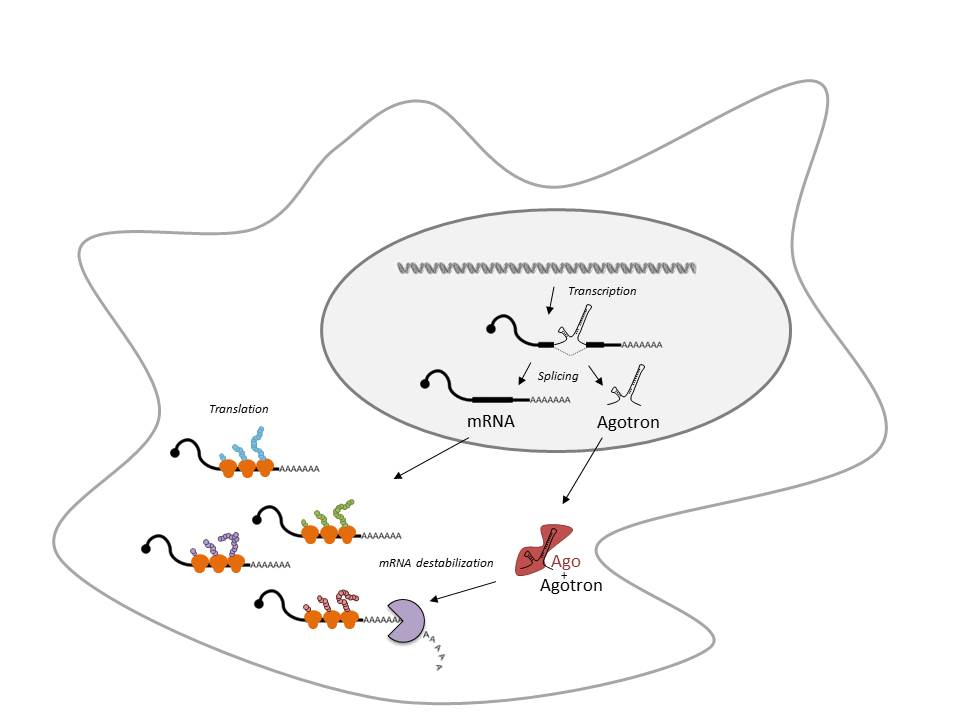Agotrons – a new class of small regulatory molecules
Danish and American researchers have found a novel subclass of small RNA molecules involved in the regulation of gene expression.

The central dogma describes how DNA is transcribed into RNA, which is subsequently translated into proteins. However, before the RNA is translated, large segments of the RNA are spliced out in a process termed RNA splicing. These non-coding parts, also called introns, are usually quickly destroyed, but researchers at Aarhus University have now uncovered a mechanism by which a specific subset of short introns (80-100 nucleotides), associate with the protein Ago and become new regulatory complexes in the cells.
The regulatory mechanism of these “Agotrons” resembles that of the microRNA family, a group of approximately 22 nucleotides long non-coding RNA discovered about two decades ago, but also clearly distinct from these by being much longer. Some agotrons are completely conserved in mammalian species, underlining their functional importance. Furthermore, agotrons are – similar to microRNAs - capable of repressing mRNAs which contain complementary target sequences.
Thus, this study provides evidence for a novel RNA-regulator of gene-expression, which bypasses the canonical microRNA biogenesis machinery. Furthermore, agotrons have escaped conventional small RNA sequencing techniques that specifically target ~22 nucleotide RNA species, and therefore the expression, regulation and implication of agotrons in cellular pathways or disease etiologies are exiting future prospects of this study.
The project was a collaboration between the labs of Assistant Professor Thomas Birkballe Hansen, Professor Jørgen Kjems, Associate Professor Christian Kroun Damgaard, at the Department of Molecular Biology and Genetics, Aarhus University and the lab of Assistant Professor, Anne Schaefer, Icahn School of Medicine at Mount Sinai, New York.
The scientific article has been published in Nature Communications.
For more information, please contact
Assistant Professor Thomas Birkballe Hansen
tbh@mbg.au.dk – +45 2073 3619
or
Professor Jørgen Kjems
jk@mbg.au.dk– +45 2899 2086
Department of Molecular Biology and Genetics/iNANO
Aarhus University, Denmark
